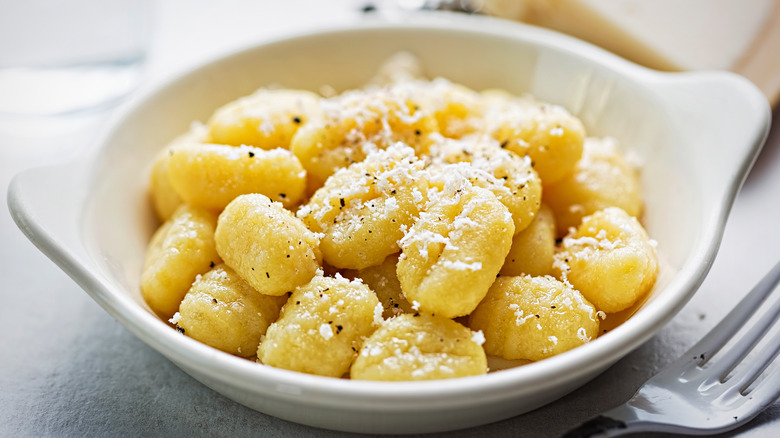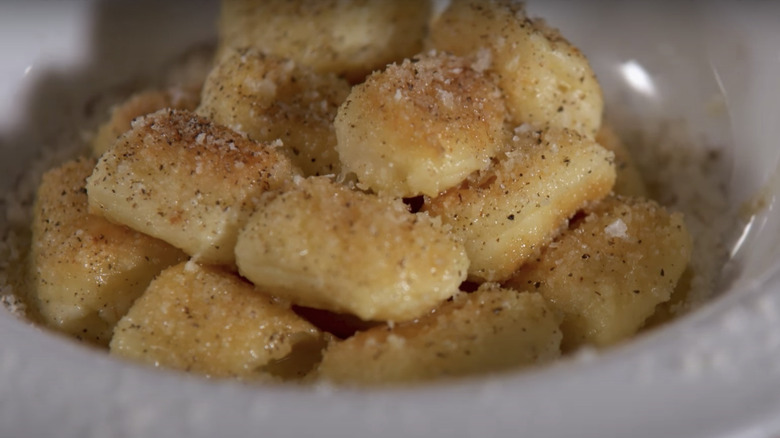Gnocchi A La Parisienne Puts A French Spin On Italian Gnocchi
If you like pasta, chances are you wouldn't say no to a big bowl of hot, pillowy gnocchi. These typically Italian dumplings are thought to have initially been created in the northern part of the country, according to Saveur. Frequently shaped from a dough containing potato and wheat flour and then rolled out into logs that are then cut into individual pieces, the outlet notes that gnocchi variations abound across Italy, utilizing local ingredients such as semolina, chestnuts, pumpkin, and ricotta.
Somewhere along the way, the idea of gnocchi also made its way to France, where it was again reinterpreted according to local culinary customs. There, cooks were accustomed to using pâte à choux dough, according to Food & Wine — that same stovetop-stirred mix that's used to create puffy, browned profiteroles, cream puffs, and éclairs — so that's the base they used for creating a French spin on gnocchi called gnocchi a la Parisienne.
Once shaped and boiled, Parisian gnocchi are sprinkled with cheese and baked until browned
If you've ever baked homemade éclairs, or whipped up the simple cheese puffs known as gougères, then you've already worked with pâte à choux dough. A somewhat different approach to dough that involves heating water, butter, and salt on the stovetop and then mixing in flour and eggs until the dough is smooth and shiny, pâte à choux creates a light, airy result that's way less dense than many other flour-based doughs — which actually gives it a leg up in the French take on gnocchi, according to Serious Eats.
The outlet notes that because pâte à choux is a hot water dough, the heat actually denatures the proteins gliadin and glutenin that have to unite to form gluten, the protein that adds chew to baked goods like sourdough bread. In pasta — particularly one that's supposed to be pillowy and fluffy, like gnocchi — you want to avoid gluten formation. Thanks to their pâte à choux base, Parisian gnocchi can actually turn out lighter and more tender than their Italian counterpart.
Once the dough is made and transferred to a piping bag, it's piped over simmering water, using a knife to cut off each individual gnocchi. After about three minutes of cooking, the gnocchi is drained, piled into a buttered baking dish, sprinkled with grated Parmesan, then baked until golden brown and puffy (via Food & Wine). Ça, c'est bon!

